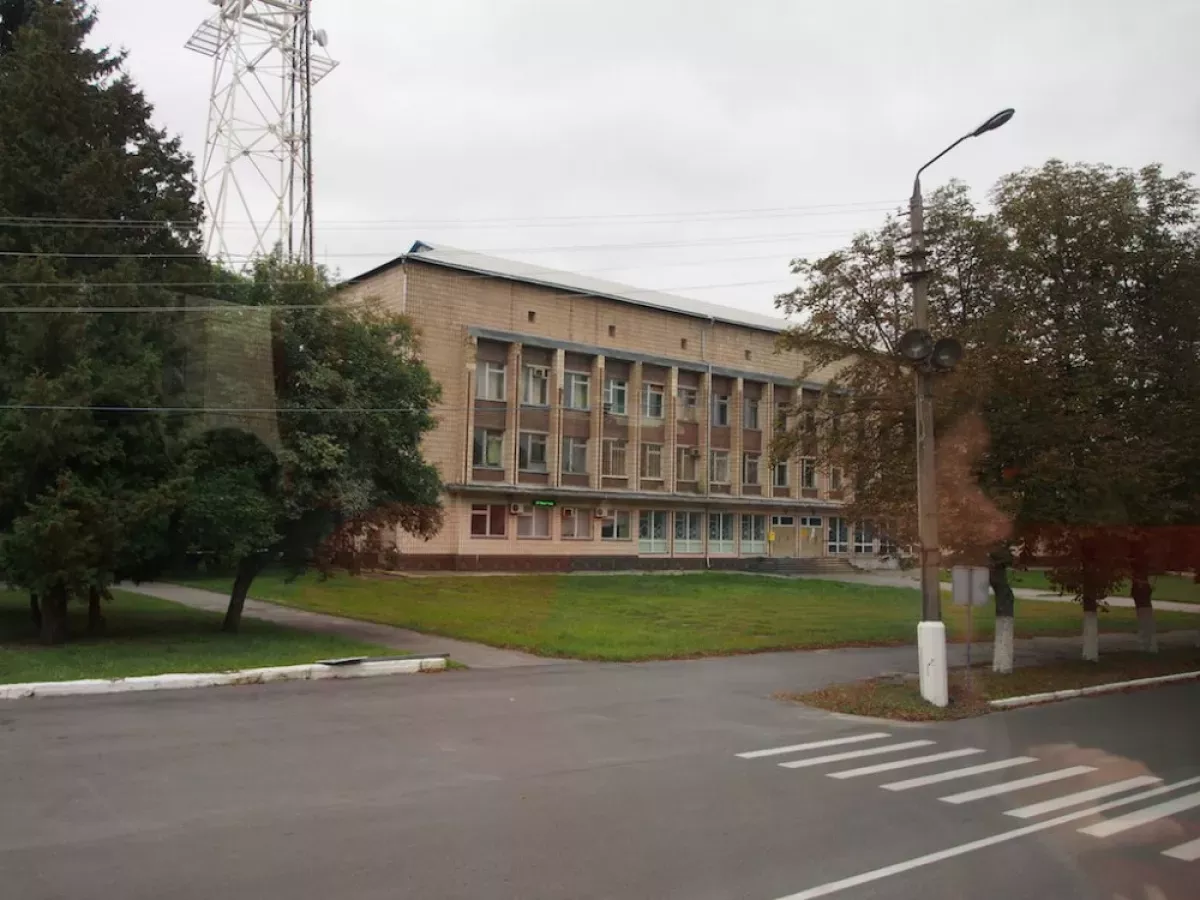Chernobyl is a partially abandoned city in Ukraine, located within the Chernobyl Exclusion Zone. Prior to the 1986 Chernobyl disaster, it housed around 14,000 residents. Following the evacuation, the city became largely deserted due to radiation contamination. Although living in the Exclusion Zone is technically illegal, some people have returned to live in less contaminated areas. As of 2020, the city's population was estimated to be around 150 people.
1902: City founding date unknown
In 1902, the Polish Geographical Dictionary stated that the city's founding date was unknown.
October 1905: Pogroms against Jewish population
In October 1905, the Jewish population of Chernobyl suffered greatly from pogroms, with many killed or robbed at the instigation of the Russian nationalist Black Hundreds.
1910: Chodkiewicz family ownership
Until 1910, the Chodkiewicz family owned a castle and a house in Chernobyl, despite selling the city to the state in 1896.
March 1918: Chernobyl occupied by German forces
In March 1918, during World War I, Chernobyl was occupied by German forces in accordance with the Treaty of Brest-Litovsk.
April 1919: Pogroms against Jewish population
In April 1919, the Jewish population of Chernobyl suffered greatly from pogroms, with many killed or robbed at the instigation of the Russian nationalist Black Hundreds.
1919: Chernobyl taken in Polish-Soviet War
During the Polish-Soviet War of 1919-20, Chernobyl was taken first by the Polish Army and then by the cavalry of the Red Army.
1920: Twersky Dynasty leaves Chernobyl
In 1920, the Twersky Dynasty left Chernobyl, marking the end of the city as a center of Hasidism.
1921: Chernobyl incorporated into Ukrainian SSR
From 1921 onwards, Chernobyl was officially incorporated into the Ukrainian SSR.
1923: Chernobyl as administrative center
From 1923 onwards, Chernobyl had been the administrative centre of Chernobyl Raion.
1929: Collectivization killings in Chernobyl
Between 1929 and 1933, Chernobyl suffered from killings during Stalin's collectivization campaign.
1933: Famine affects Chernobyl
Between 1929 and 1933, Chernobyl was affected by the famine that resulted from Stalin's policies.
1936: Deportation of Polish and German Community
In 1936, the Polish and German community of Chernobyl was deported to Kazakhstan during the Frontier Clearances.
August 1941: German Occupation of Chernobyl
On August 25, 1941, during World War II, Chernobyl was occupied by the German Army.
November 1943: Liberation of Chernobyl
On November 17, 1943, Chernobyl was liberated from German occupation during World War II.
February 1970: Founding of Pripyat
On February 4, 1970, Pripyat, an "atomograd" city, was founded to serve the Chernobyl Nuclear Power Plant.
August 1972: Construction of Chernobyl Nuclear Power Plant begins
On August 15, 1972, construction of the Chernobyl Nuclear Power Plant began about 15 km northwest of Chernobyl.
1972: Chernobyl selected as nuclear plant site
In 1972, Chernobyl was selected as the site of the Chernobyl Nuclear Power Plant, leading to the construction of Pripyat nearby to house the plant's workers.
1972: Construction of Duga-1 begins
In 1972, construction of the Duga-1 radio receiver, part of the Duga over-the-horizon radar array, began 11 km west-northwest of Chernobyl as part of an anti-ballistic missile early-warning radar network.
1977: Chernobyl Nuclear Power Plant opens
In 1977, the Chernobyl Nuclear Power Plant opened 15 kilometers north of Chernobyl.
April 1986: Chernobyl Nuclear Power Plant explosion
On April 26, 1986, one of the reactors at the Chernobyl Nuclear Power Plant exploded due to improper testing and design flaws of the RBMK reactor, leading to a loss of control and thermal runaway.
May 1986: Evacuation of Chernobyl after nuclear disaster
On May 5, 1986, following the nuclear disaster at the Chernobyl Nuclear Power Plant, the city of Chernobyl was evacuated, and residents were relocated to Slavutych. Pripyat remains completely abandoned.
May 1986: Evacuation of Chernobyl and Pripyat begins
On May 5, 1986, nine days after the Reactor No. 4 explosion, the Soviet government began evacuating residents of Chernobyl and Pripyat in preparation for disaster management. Evacuees were later settled in Slavutych.
1986: City evacuation and contamination levels
In 1986, Chernobyl city was evacuated nine days after the disaster. The level of contamination with caesium-137 was around 555 kBq/m.
1986: Chernobyl disaster leads to evacuation
In 1986, following the Chernobyl disaster, the city of Chernobyl was evacuated. Prior to this, it housed approximately 14,000 residents.
1988: Dissolution of Chernobyl Raion
In 1988, Chernobyl Raion was dissolved and merged with Ivankiv Raion due to widespread radioactive contamination.
1991: Chernobyl remains part of Ukraine
With the dissolution of the Soviet Union in 1991, Chernobyl remained part of Ukraine within the Chernobyl Exclusion Zone, which Ukraine inherited.
1998: Average Caesium-137 doses
In 1998, average caesium-137 doses from the accident were estimated at 1–2 mSv per year, not exceeding those from other sources of exposure.
2003: Chernobyl Recovery and Development Programme launched
In 2003, the United Nations Development Programme launched the Chernobyl Recovery and Development Programme (CRDP) to mitigate the long-term consequences of the Chernobyl disaster.
2005: Archaeological Excavations
Archaeological excavations conducted in 2005-2008 found a cultural layer from the 10–12th centuries AD, predating the first documentary mention of Chernobyl.
2008: Archaeological Excavations
Archaeological excavations conducted in 2005-2008 found a cultural layer from the 10–12th centuries AD, predating the first documentary mention of Chernobyl.
2019: Caesium-137 dose rates
As of 2019, current effective caesium-137 dose rates are 200–250 nSv/h, or roughly 1.7–2.2 mSv per year, comparable to worldwide average background radiation from natural sources.
2019: Publication of Roman Kyiv book
In 2019, Ukrainian architect Boris Yerofalov-Pylypchak published the book "Roman Kyiv or Castrum Azagarium at Kyiv-Podil".
2020: Ivankiv Raion merged with Vyshhorod Raion
During Ukraine's 2020 administrative reform, Ivankiv Raion was dissolved and merged with Vyshhorod Raion.
2020: Chernobyl population estimate
In 2020, the population estimate of Chernobyl was 150 people, despite living within the Chernobyl Exclusion Zone technically being illegal.
February 2022: Russian invasion sparks nuclear concerns
In February 2022, the beginning of the Russian invasion of Ukraine raised international concerns about the stability of Ukrainian nuclear facilities.
April 2022: Russian occupation causes radiation spike
Reports indicated that Russia's occupation of the Chernobyl Exclusion Zone until April 2022 caused a spike in radiation levels.
Mentioned in this timeline
Ukraine is a large country in Eastern Europe second in...

Radar is a radiodetermination system using radio waves to detect...
The Union of Soviet Socialist Republics USSR existed from to...

A dictionary is a reference work containing lexemes from one...
Kazakhstan a landlocked country in Central Asia with a small...

Books are a means of storing information as text or...
Trending

1 month ago Peyton Watson's Opportunity: Millions on Nuggets Roster and Denver Breakout Potential.
7 months ago HBO's 'Mountainhead' skewers tech elite in a satisfying end-of-world satire.
1 month ago HBO Max Offers Huge Black Friday Discount: One Year for Just $36!

21 days ago James Harden Trade Rumors: Clippers, Rockets, and Timberwolves as Potential Landing Spots.

2 months ago [TO_BE_ADDED_BY_AI]

4 months ago NBA and NBPA support betting limitations; is Michael Porter Jr. a problem?
Popular

Ben Shapiro is a prominent American conservative political commentator media...

XXXTentacion born Jahseh Dwayne Ricardo Onfroy was a controversial yet...

Candace Owens is an American conservative political commentator and author...

William Franklin Graham III commonly known as Franklin Graham is...
The Kennedy Center Honors are annual awards recognizing individuals and...

Tucker Carlson is an American conservative political commentator known for...
